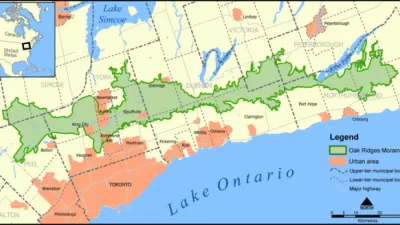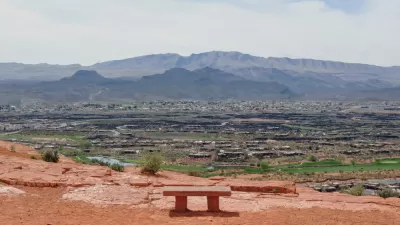Over half of the land in the American West is publicly owned. Policy over the last century has tended towards allowing the extraction of natural resources, but it may be time for a shift into preservation.
"Between 1970 and 2000, nonlabor jobs fueled 86 percent of this growth. Mining, timber, and agriculture (including ranching) contributed only 1 percent. Now, 93 percent of jobs in the West have no direct link to public lands, says Rasker. But wilderness areas, in conjunction with infrastructure like airports, correlated closely with areas that saw the greatest growth.
'The major contribution is that it creates a setting,' he says, and that's what immigrants want. Conserving rather than exploiting nature makes more economic sense, he says. People move here to live near nature.
Land-management agencies have been slow to recognize the new role of unspoiled public lands as an amenity, he says. But they're coming around. The marked 'blue shift' in the politics of Western states in the recent election suggests a more conservation-minded public."
FULL STORY: Can America’s West stay wild?

Maui's Vacation Rental Debate Turns Ugly
Verbal attacks, misinformation campaigns and fistfights plague a high-stakes debate to convert thousands of vacation rentals into long-term housing.

Planetizen Federal Action Tracker
A weekly monitor of how Trump’s orders and actions are impacting planners and planning in America.

In Urban Planning, AI Prompting Could be the New Design Thinking
Creativity has long been key to great urban design. What if we see AI as our new creative partner?

Massachusetts Budget Helps Close MBTA Budget Gap
The budget signed by Gov. Maura Healey includes $470 million in MBTA funding for the next fiscal year.

Milwaukee Launches Vision Zero Plan
Seven years after the city signed its Complete Streets Policy, the city is doubling down on its efforts to eliminate traffic deaths.

Portland Raises Parking Fees to Pay for Street Maintenance
The city is struggling to bridge a massive budget gap at the Bureau of Transportation, which largely depleted its reserves during the Civd-19 pandemic.
Urban Design for Planners 1: Software Tools
This six-course series explores essential urban design concepts using open source software and equips planners with the tools they need to participate fully in the urban design process.
Planning for Universal Design
Learn the tools for implementing Universal Design in planning regulations.
Gallatin County Department of Planning & Community Development
Heyer Gruel & Associates PA
JM Goldson LLC
City of Camden Redevelopment Agency
City of Astoria
Transportation Research & Education Center (TREC) at Portland State University
Jefferson Parish Government
Camden Redevelopment Agency
City of Claremont





























